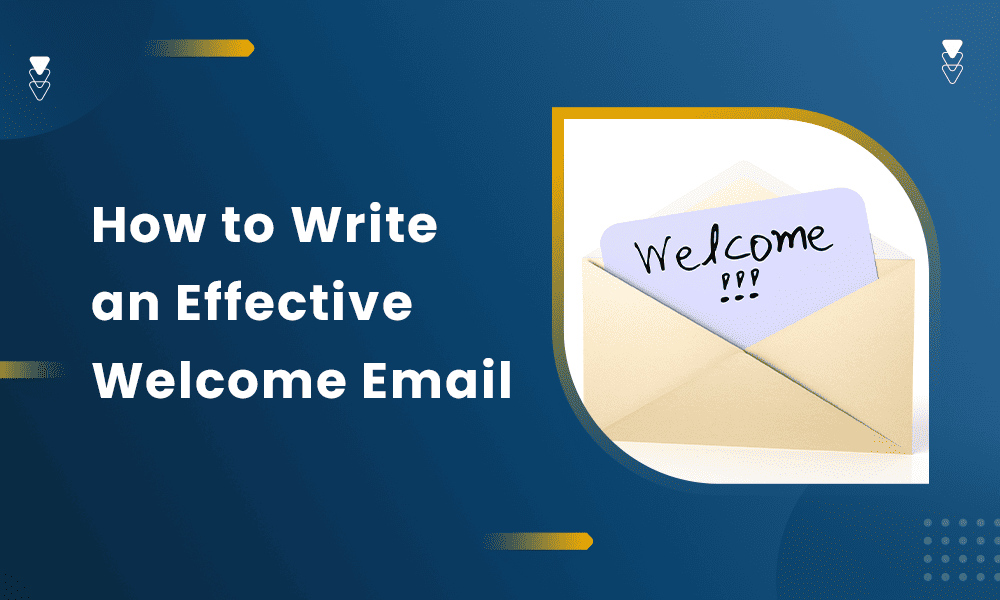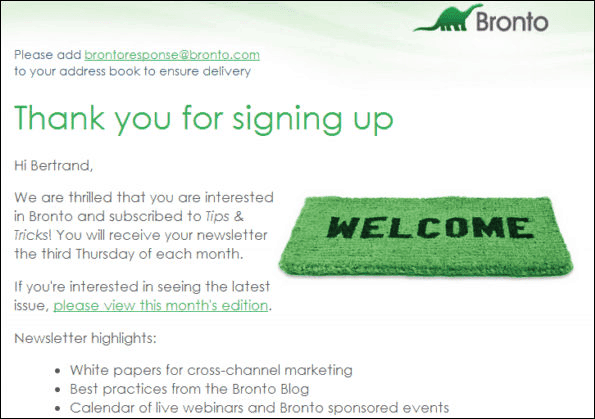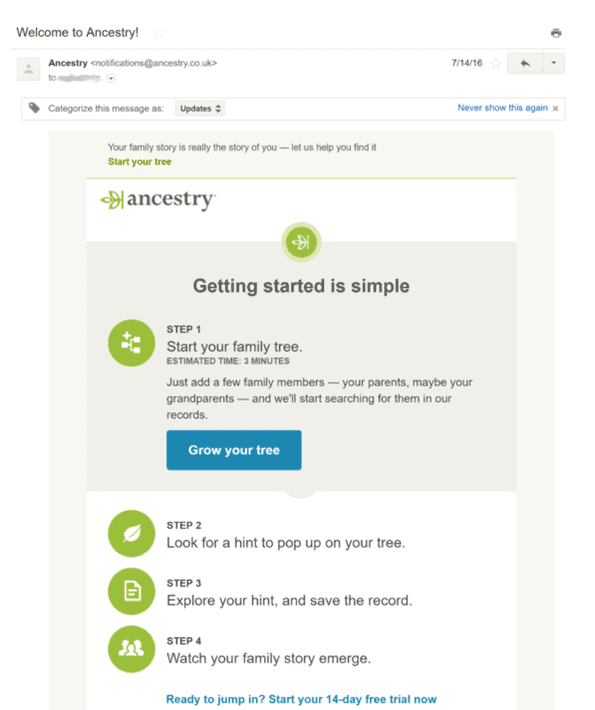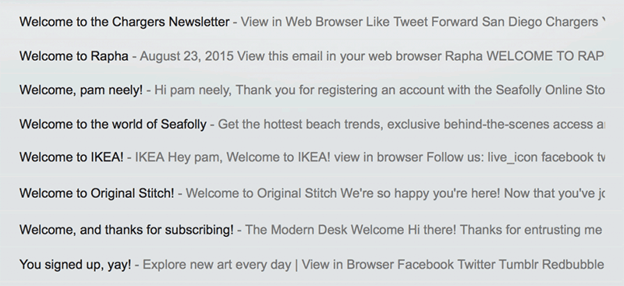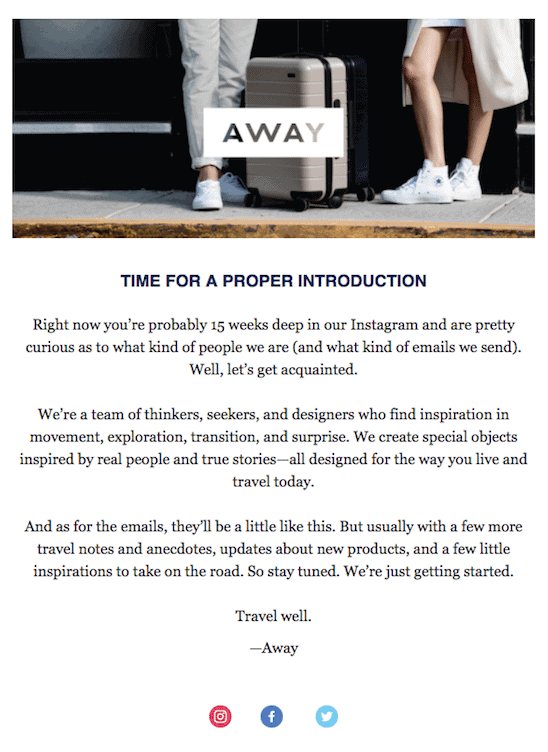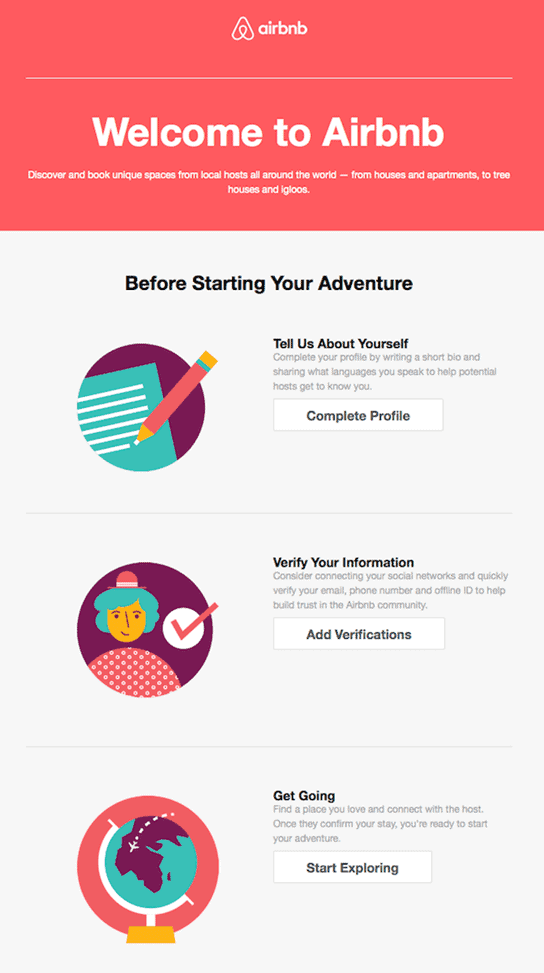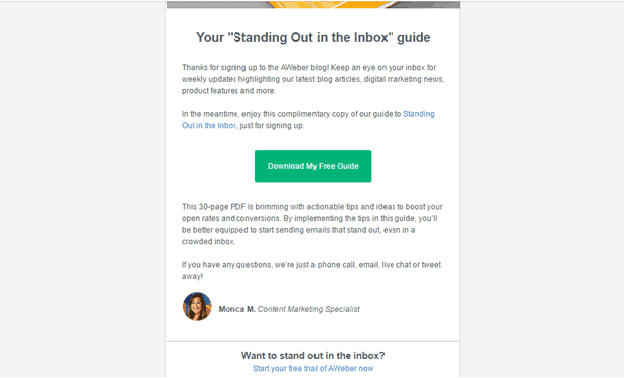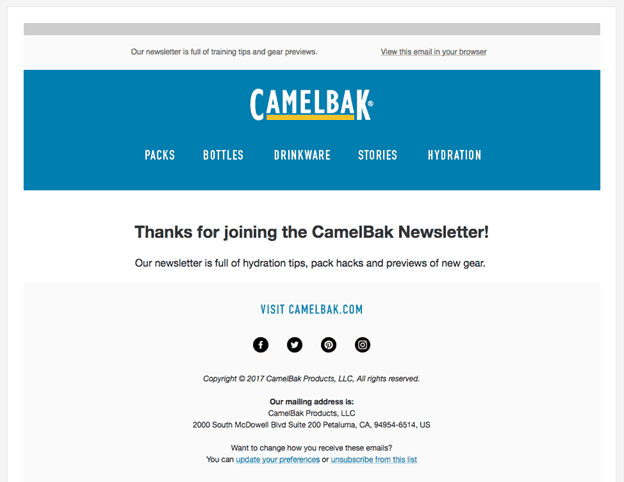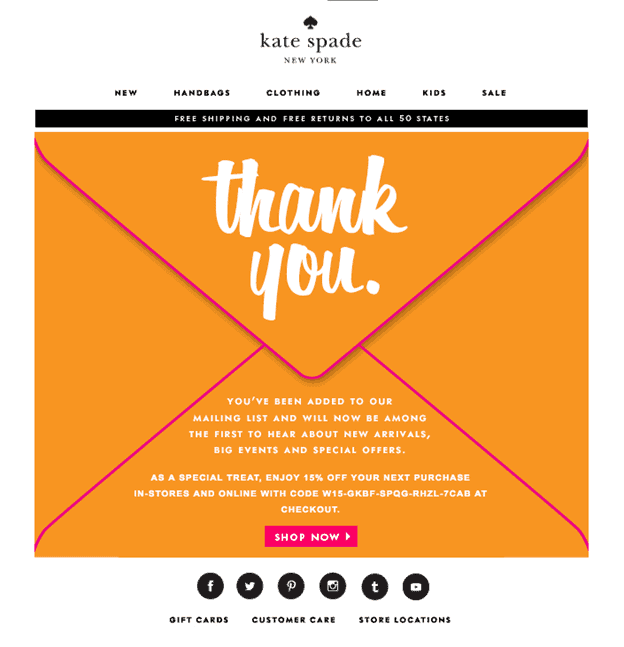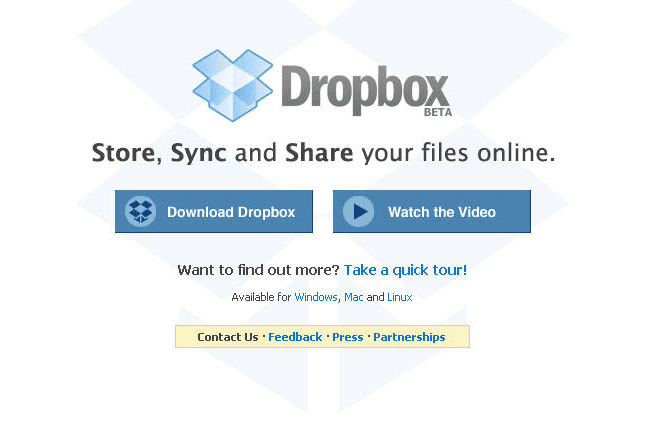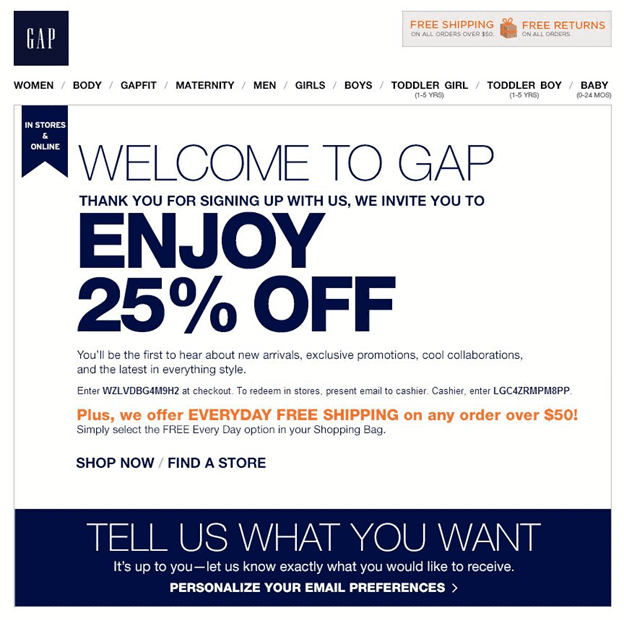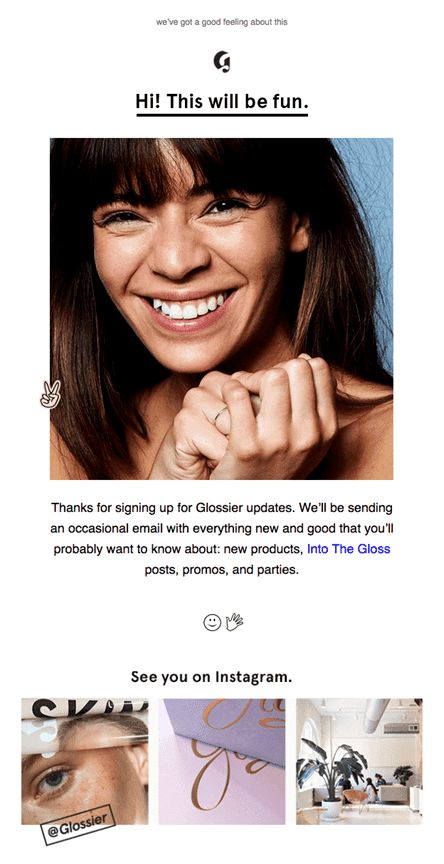You have a great email design that catches the attention of your audience and effectively represents your brand.
Furthermore, you have already implemented lead magnets, such as enticing offers or valuable content, to attract potential customers and build your email marketing database.
Your efforts have paid off as you’ve successfully captured the interest of a lead who has willingly opted into your newsletter or email list.
Congratulations on this achievement!
However, now comes the crucial task of engaging with this lead and nurturing them towards becoming a loyal customer through your ongoing email marketing strategy and activities.
To initiate this process and establish a strong connection with the lead, one effective approach is to promptly send them a welcome message in the form of an email.
A welcome email serves as the starting point of your relationship with the lead.
Welcome messages allow you to introduce your brand, express gratitude for their interest, and provide them with a glimpse of what they can expect from being a part of your email community.
This initial interaction presents a valuable opportunity to make a positive first impression, demonstrate your value proposition, and set the tone for future communications.
By crafting a compelling and well-crafted welcome message or welcome email, you can captivate the lead’s attention, pique their curiosity, and encourage them to further engage with your brand.
Through personalized and targeted content, you can showcase your expertise, highlight the benefits of your products or services, and demonstrate how you can fulfill their needs or solve their problems.
Furthermore, a welcome email can include a call-to-action, inviting the lead to take the next step, such as exploring your website, making a purchase, or subscribing to additional newsletters or updates.
Remember, the ultimate goal is to nurture the lead’s interest and guide them along the customer journey, steadily building a relationship of trust and credibility.
With a well-crafted welcome email, you can effectively kick-start this process and increase the chances of converting your leads into loyal customers.
Table of Contents
What is a welcome email?
It’s somewhat self-explanatory. This often short but sweet email is a welcome message thanking your new email subscribers and welcoming them into the fold.
More than that, you can pepper in email content that makes the email worth reading. Maybe you include a form so the subscriber can set up a consultation to address questions they may have.
You could even give them a special one-time offer. This builds trust.
Here’s one of the best welcome email examples:
Image courtesy of Digital Marketing Glossary
Why Is It Important to Send a Welcome Email?
- To Introduce Yourself
- To Increase Your Audience
- To Develop Trust
- To Boost Those Open Rates
To Introduce Yourself
Imagine meeting a couple of your friends’ friends, but your pals didn’t bother introducing you to anybody.
Wouldn’t you feel incredibly isolated? Probably. Worse yet, you would feel confused and uncertain.
You don’t know anything about this person, such as their job, where they’re from, or even how your friend knows them. That gives you no talking points to get to know them better.
Now that you’re bringing in customers or potential customers through your email newsletter, it’s paramount you don’t skip the introductions via your welcome email.
Write great welcome emails with EngageBay’s powerful Email software
Otherwise, your audience will feel much the same way as in the scenario we just laid out. They’ll be confused about why you didn’t introduce yourself. They’ll also be at a loss as to how to proceed.
That’s not the best note to begin any relationship, especially a professional one. You want these new customers to feel confident that they’ve made the right choice by opting into your emails.
Your introduction need not be lengthy, especially if you want your audience to read it. You can tell a bit about your company’s history, what you do, and what you hope to do for those who have subscribed to your emails.
To Increase Your Audience
Introducing yourself not only puts the reader’s mind at ease, but it can present several useful opportunities.
As we said in the paragraph above, as you talk about yourself, the conversation will inevitably turn to what your company does.
Whether you sell products or services, you can mention these if talking about your best-sellers or a product you’re very known for.
That gives you the chance to link to your product(s) and potentially drive a sale. Now, that’s not guaranteed, but it can happen.
You can also use your intro to link your readers to your blog or a landing page. Just don’t throw in too many links, as your email can get cluttered and look spammy.
Plus, you lose the plot, which is to essentially say hello, thanks for subscribing, here’s what’s next.
To Develop Trust
Have you ever made a big purchase online like an expensive retail item or concert tickets?
The webpage on your phone or computer says the order went through, but you sit white-knuckled until you get the confirmation email.
Otherwise, you’re not totally confident the item is in your possession (or will be once it ships).
Although maybe not as serious, the same applies to a welcome email or lack thereof.
People today are incredibly serious about their privacy. As companies of all sizes suffer hacks and security breaches countless times, consumers become more guarded about who gets their information.
Consumers are also aware their info gets sold to third parties for advertising, and they don’t like that much either.
Customer preference aside, you also have to concern yourself with the General Data Protection Regulation or GDPR.
EngageBay is totally committed to user privacy and is GDPR compliant
Although this originated in the European Union (EU), it affects businesses around the world, maybe even yours. That regulation is all about consumer privacy.
What we’re trying to say is this: if a potential customer signs up for your emails but gets no welcome email, their hackles will go up.
Did their opt-in not go through? Do you still have their info? What do you plan to do with it?
The faster you can send a welcome email, the more trust your readers can develop in you. That will only help you as you begin to offer your products and services.
To Boost Those Open Rates
Are there any emails that get opened more than one someone is expecting?
You know, those order confirmations and yes, your welcome email. Okay, maybe people open discount or freebie emails more, but still, the potential for a high open-rate is there.
Read also: Practical Onboarding Email Templates For New Clients, Employees, And Affiliates
Welcome Email Statistics
If you’re not already sending welcome emails after getting subscribers, you need to start.
According to conversion rate resource Invesp, here are some benefits you can reap through a welcome email:
- A higher conversion rate of 0.94 percent. Any other email has a conversion rate of just 0.10 percent.
- A better click-through rate. You could get 14.4 percent more clicks on a welcome email. For other emails, it’s just 2.7 percent.
- By adding an offer to your welcome email, you can see a 30-percent revenue boost for your company for each email you send.
- Engagement goes up by 33 percent when your subscribers get a welcome email.
- Most consumers today expect them, 74 percent!
- Want a higher open rate? Welcome emails hover around an 86-percent open rate .
Here’s a video of Welcome Emails to keep your subscribers engaged:
How to Write a Good Welcome Email
- “You” Language
- Links
- Expectations
- Social Links
While we’re going to provide lots of tips and techniques later, we thought we’d offer a few pointers now on how to write a good welcome email. Make sure any welcome message you write going forward includes the following elements.
Create jaw-dropping emails with EngageBay’s huge collection of amazing email templates
“You” Language
A Welcome email is a personal message, so there’s no reason to get too formal. Skip the “dear” and include the person’s name instead, as you greet them in the welcome email.
Also, write the welcome email in the you-based language. Not only does this create an air of personalization and intimacy, but it also shows that you plan to attend to a reader’s needs.
You care about them as an individual, and this is your first chance to show that. You want to get things off on the right foot, so watch your language.
Links
As we said before, it’s okay to slip in a few links to your store or landing pages in your welcome email.
Should every other word be a hyperlink? No. Should you showcase six or seven products in one email? Again, no. You don’t want to overwhelm your new audience members.
You also don’t want to drive them away by being excessively salesy.
Gently pepper in some links, provided they’re relevant. When you do, try to focus on your best-selling products or services.
If you have a big-name product or service, then you want to talk about that as well.
Read also: 14 Great Win-Back Email Examples Customers Can’t Resist
Expectations
A welcome email isn’t about a brief hello and then a dive straight into what you sell. It’s also not all about you with a paragraphs-long bio.
That will turn your readers off in a jiffy. Instead, you want to make them a part of the experience, too.
How? By telling them what they’re in for now that they’ve subscribed to. Perhaps that’s weekly emails, monthly newsletters, or something in between. Whatever it is, you want to mention it now.
This serves two purposes. For one, it gives the customer a clear-cut plan for how often you’ll contact them. This way, they know they won’t get bombarded with emails from you. That could increase trust.
Second, it conditions the customer to look forward to your emails at certain days/times.
For instance, if you send a weekly email on Friday afternoons, your readers will get into the habit of checking their inboxes at noon on Fridays for your message.
Social Links
Include all your social sharing buttons somewhere in the welcome email as well.
From Facebook to Twitter, Instagram, YouTube, Pinterest, and everything in between, make sure those buttons are visible.
Besides just displaying them in your welcome email, make sure you ask your readers to give you a follow.
The Dos and Don’ts of Welcome Emails
- DO Keep Emails Personalized
- DON’T Limit Communications
- DO Send a Welcome Email Series
- DON’T Send Emails More (or Less) Often Than You Said You Would
Finally, before we get into the meat of the article, let’s share some dos and don’ts for writing welcome emails. Keep these rules in the back of your mind as you read through the rest of this article.
DO Keep Emails Personalized
As CampaignMonitor mentions, it’s possible to boost sales by up to 20 percent with personalization. These targeted, individualized emails can comprise as much as 58 percent of your company’s revenue.
Make sure that you personalize all your company messages, including welcome emails.
DON’T Limit Communications
Your readers don’t only have to reply through email. As we talked about in the prior section, you can also encourage them to check out your social media through social sharing buttons.
You may also link to your blog posts and other relevant pages. Don’t forget that when drafting your welcome emails!
Read also: How To Write An Invoice Email And Get Paid Fast
DO Send a Welcome Email Series
Welcome emails don’t have to be one and done. A welcome email series may include your intro email followed by a second message recommending products.
Then you could offer a coupon. You’re trying to drive sales, and a welcome email series can do that more effectively than a single message.
DON’T Send Emails More (or Less) Often Than You Said You Would
If, following the example above, you wrote that you’d email your audience on Fridays at noon, don’t skip that unless you announce it ahead of time.
Also, when setting expectations, if you only said you’d email once a week, don’t send four weekly emails. That’s showing you can’t stick to your word, and that can change your audience’s perception of you for the worse.
8 Tips and Strategies for Writing an Effective Welcome Email
- 1. Like Any Email, the Subject Line Is Important
- 2. Personalize, Personalize, Personalize
- 3. Do an Introduction
- 4. Create Expectations for the Future
- 5. Include Videos as Well as Images
- 6. Make Your Offer
- 7. Keep the Line of Communication Open
- 8. A/B Test Everything
Convinced you need to begin sending welcome email newsletters? Great! Now it’s time to craft your own welcome campaign for your new subscribers.
After all, not to put any pressure on you, but this is one of the most effective emails you’ll ever send to your would-be customers. It’s gotta be good.
In this article, we’ll tell you exactly what you need to know to write an effective welcome email. We’ll also include some of the best welcome emails for your perusal and inspiration.
Let’s get started!
1. Like Any Email, the Email Subject Line Is Important
Since the lead subscribed to your email list, there’s an expectation they’ll open emails they see from you. Sure, there’s that expectation, but that doesn’t mean it’s a reality.
You still need to work to hook your subscribers in since they’re not quite customers yet. It’s your job to get them there.
The first way you can do that is with a great email subject line.
On this blog, we’ve referred to the email subject line as your first impression, because it often is. In the case of a welcome email, this is like your second impression, but it’s still the first official communication between you and the subscriber.
The email subject line best practices we’ve written about in the past can be good to emulate, but not all of them.
Personalization is crucial (more on this in the next section), but emojis don’t quite fit in this first email.
Short and simple win the day here. Just look at another of the best welcome email examples to see what we mean.
Image courtesy of OptinMonster
The subject line says “Welcome to Ancestry!” While there’s nothing inherently wrong with that, every other company will send an email just like it. You want yours to have more oomph, which brings us to our next point…
Read also: ECommerce Welcome Emails: Dazzle, Delight, Convert [Examples & Templates]
2. Personalize, Personalize, Personalize
As you seek to build your email list, you’ll have a lot of subscribers registering. The best way to engage with them all and make them feel special is through email personalization.
It’s quite easy to personalize your welcome email. The first way you can do so is with a personalized subject line. If we use the same example from above, the Ancestry.com welcome email, their subject line could read “[Name,] welcome to Ancestry.” That already makes such a bigger impact.
Here are a couple of other subject lines that were sent to a Campaign Monitor employee:
Image courtesy of Campaign Monitor
There are eight emails in total here. Seven of them start with “welcome.”
The second of two Seafolly emails stands out because it’s personalized.
We also like the email at the bottom because that’s an original subject line. Of all those emails, we bet your eyes went to “You signed up, yay!” first. There’s no “welcome” in sight.
By personalizing your subject line and trying not to write the same ol’, same ol’ that everyone else is, you’re already off to a great start.
You’re not done personalizing yet, though. When it comes to the body of your email, you should address each subscriber by name.
Again, you want to make them feel like you’re writing this email just for them, even if you do happen to use a template.
Personalization is one of the easiest ways to do that. You’ll also continue nurturing the relationship through your welcome email.
👉Boost your email marketing success with the ultimate trigger email strategies – dive into our in-depth guide today! 🌟
3. Do an Introduction
Okay, with your subject line out of the way, let’s talk more about the body of the welcome email itself.
This particular email is quite important because it’s your chance to introduce yourself and your company.
At this stage of the game, you have no idea how much or how little your subscriber knows about your company. You want to write your intro like they don’t know anything about you.
This isn’t the time to compile a lengthy history of your company or highlight every product you sell, then. You want to keep the email relatively brief.
Write just enough to fill in the subscriber but not too much that they get bored.
Here’s an example you might follow for your own welcome email:
Image courtesy of Instapage
Away, a travel luggage company wrote a semi-long introduction for their welcome email.
The first paragraph states their intention, to introduce themselves.
In the second paragraph, they do just that. Then, in the third paragraph, they create expectations.
We’ll get back to this concept in the next section. Keep it in mind for now.
Your welcome email for your new subscribers may be formatted similarly or completely different. It all depends on your industry.
If you’re a service, then you’re going to want to get people up and running right away, like another of the best welcome email examples below:
Image courtesy of Airbnb
You might also ask them to download an offer, like in one of the welcome email examples below.
Image courtesy of MailMunch
Maybe you want them to check out your website:
Image courtesy of BigCommerce
Or start spending money:
Image courtesy of HubSpot
There are so many ways to write a welcome email to your new subscribers, as you can see. You can surely find one of the welcome email examples that should work for you.
Read also: How to Write Welcome Email Subject Lines (Tips + Templates)
4. Create Expectations for the Future
Let’s circle back to the email from the luggage brand Away. This time, let’s look at the third paragraph of their welcome email.
What they’re doing in this paragraph is establishing expectations for your new subscribers. They’re telling you what kinds of emails you’ll receive in your inbox now that you’ve subscribed.
While Away didn’t do it, you can always establish expectations another way. For instance, you might let your new subscribers know how often you’ll send emails.
This is important for several reasons. No one likes being spammed, whether they signed up for the emails or not.
By creating expectations early for your new subscribers, you let your customers know that you won’t be a nuisance to them. They may then look forward to your emails and be more likely to open them.
Another benefit of setting expectations like this is you’re adding value to your emails. Just look at how Away did it.
They mentioned how they’ll share travel inspiration, product updates, anecdotes, and travel notes. If you’re into travel like their audience is, this content is valuable.
Letting your new subscribers know what they’re in for, especially if it’s high-value content, makes them feel like they made the right choice by signing up.
Once you foster that relationship through nurturing and engagement, you can possibly convert these leads more easily.
Read also: Bounce Back Emails: What Are They And How To Fix Them
5. Include Videos as Well as Images
All the welcome emails we’ve showcased so far have images. This is standard, but what about video?
Not as much.
There are a few reasons you might want to include a video in your welcome email templates. The first is for engagement.
A short, personal video where you introduce yourself and tell a bit about your company can permeate more deeply than a paragraph that states the same.
The second is for transparency. More and more today, consumers want to know who is behind the companies they do business with. When you introduce yourself with a face and a name, you satiate that need.
The third reason you might use video is if you have a complicated product or service you provide.
Once upon a time, when Dropbox came onto the scene, what they did was pretty much unheard of. Nowadays, everyone knows what Dropbox is and how it works, but that wasn’t the case then.
Dropbox could have written paragraph after paragraph in a welcome email trying to explain their services. Instead, they decided to make an explainer video.
Image courtesy of Customer.io
It was only two minutes long, but it simplified the process faster than any copy could have.
Thus, if you’re doing something new and novel with your company, that could be yet another incentive for you to consider using video in your welcome email.
Read also: How to Create a Successful Welcome Email Series
6. Make Your Offer
Okay, you’ve written a great subject line. You’ve introduced yourself and your company, whether through text or an explainer video.
Now it’s time to get to the meat of the email: your offer.
Look at the example from Dropbox above. See that big, blue CTA (call to action) button that says “Download Dropbox?” That’s an offer.
Here’s another example:
Image courtesy of VerticalResponse
In this case, the CTA is asking you to read so you know more about the service. Once you click that link, we’re pretty confident you’d be redirected to a page that’d be asking you to start shopping.
If you do want to skip right to the shopping part, then a discount or special offer is one way to get subscribers in a buying mood.
Image courtesy of AgilOne
It’s pretty hard to turn down 25 percent off, right? This offer even extends to stores, which is convenient for the subscriber. They get to choose how they shop.
Read also: Welcome Email Templates to Win Over New Subscribers
7. Keep the Line of Communication Open
When you established expectations with your subscriber in your welcome email, you clued them in on how often you’d email and what kind of content you’d send.
That’s a great start, but you want to open the line of communication even wider.
You can do this in several ways. Perhaps you share your social media accounts in the welcome email, such as in this example:
Image courtesy of Instapage
Want to do something else? You could always include a form for the subscriber to set up a consultation with you if your company does consultations. Otherwise, feel free to drop in your phone number somewhere in the email.
Doing the above does indeed leave the ball in the subscriber’s court, but you’d send follow-up emails from there. If you don’t hear from them between now and then, don’t sweat it.
Read also: How to Send the Perfect Welcome Emails to New Employees
8. A/B Test Everything
From your CTA (call to actions) buttons to your background image, your subject line, and anything and everything in between, you must A/B test it all.
We just wrote a great post on our blog about the importance of email A/B testing. Do check it out if you missed it.
You want to do everything in your power to maximize email open and click-through rates and boost conversions. Don’t let all your good effort go to waste by forgetting to A/B test.
Read also: Personalize Your Email Sequence – Connect Better, Sell More
Conclusion
Welcome emails have proven to be highly effective in terms of open and click-through rates, often outperforming other types of emails sent to subscribers.
The potential impact and engagement of these initial emails can be both exciting and overwhelming.
However, it’s important to recognize that this situation presents a valuable opportunity for you to make a lasting impression and solidify your relationship with your audience.
With the guidance provided by the eight tips outlined above, you now have a comprehensive framework to craft your own exceptional welcome emails.
By following these suggestions, you can create compelling, high-converting messages that resonate with your subscribers and drive them to take action.
Remember to leverage personalization, make a strong and genuine connection, and clearly communicate the value and benefits your brand offers.
Incorporate engaging visuals, compelling copy, and well-placed call-to-action buttons to guide your subscribers towards the desired outcome.
Additionally, consider implementing automated welcome email sequences to further nurture your new subscribers and provide them with valuable content over time.
As you embark on this journey of crafting great welcome emails, keep in mind that it’s an ongoing process of experimentation and optimization.
Analyze the performance metrics, listen to your subscribers’ feedback, and continuously refine your approach to ensure that your welcome emails consistently deliver exceptional results.
By capitalizing on the potential of welcome emails and implementing the tips provided, you can seize this opportunity to build strong relationships with your subscribers, foster their trust, and ultimately drive conversions and long-term customer loyalty.
The power is in your hands—now go ahead and create those high-converting, great welcome emails!
Welcome emails have some of the highest open and click-through rates of all the emails you’ll ever send a subscriber.
That’s daunting, yes, but you also have a great opportunity on your hands. Using that opportunity wisely is now up to you.
